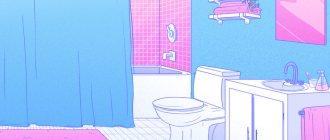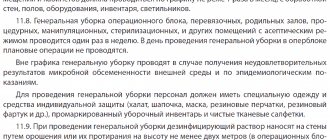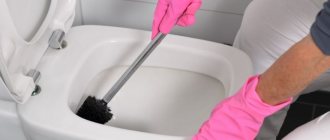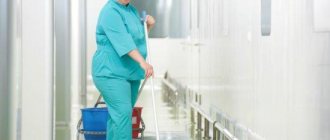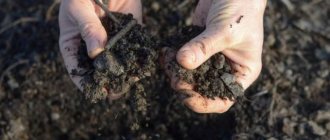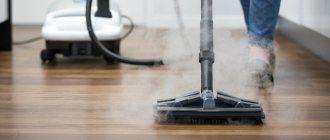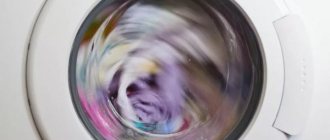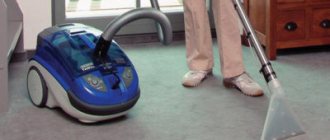A preschool institution requires special attention to maintaining cleanliness, since the health of the children attending the kindergarten directly depends on this. Cleaning in preschool educational institutions regulated by SanPiN 2.4.1.3049-13 - this document determines the procedure for work, requirements for detergents and cleaning products used, and cleaning features in the interior and surrounding areas of the kindergarten.
Cleaning in a kindergarten is divided into two types: daily and general. The main task of daily cleaning is to maintain favorable sanitary conditions and cleanliness. Daily cleaning in a preschool educational institution includes: washing and disinfecting toys, wiping furniture, washing plumbing fixtures, cleaning carpets and mopping floors, ventilating rooms and quartzing. Regular cleaning allows you to eliminate the rapid development of pathogenic microflora in the premises and, thereby, reduce the load on children's immunity. It is very important to carry out wet cleaning in a timely manner to prevent dust accumulation in the premises. Removing dust helps reduce the risk of allergic reactions in students. Finally, careful cleaning of surfaces, in particular in bathrooms and food service areas, ensures the prevention of intestinal infections.
General cleaning of premises in preschool educational institutions is carried out according to a schedule based on SanPiN. An example of such a graph is shown in the figure below.
General cleaning in the preschool educational institution is performed monthly. Unlike everyday cleaning, general cleaning is carried out with special care and covers absolutely all rooms and surfaces. During the cleaning process, all hard-to-reach places that are not treated during daily cleaning are cleaned: baseboards, floor areas under furniture, lighting fixtures, ventilation hoods, etc. Carpets and blinds are wet cleaned and heating radiators are washed. Mattresses, blankets and pillows are ventilated. All teaching materials are thoroughly cleaned of dust. Window cleaning is also carried out. Carpets can be dry cleaned if necessary.
General cleaning and disinfection is carried out in the preschool educational institution on dates appointed by the head of the institution.
In addition, the kindergarten periodically cleans the surrounding area from snow and ice, fallen leaves, debris, etc. An example of such a schedule indicating the frequency is shown in the figure below.
Cleaning of preschool premises in the warm and cold seasons is carried out according to a similar schedule. The only exception is the frequency and duration of ventilation, which varies depending on the season.
Cleaning
Disinfection (or ensuring the sanitary condition of premises in a preschool educational institution) is a necessary preventive measure, consisting of daily and general cleaning.
Specific schedules are drawn up for daily and general cleaning. These schedules for general group cleaning in kindergarten and daily cleaning are approved by the head of the preschool educational institution. And they are required to be hung in the hallway where children dress, so that parents always have the opportunity to familiarize themselves with them.
Maintaining cleanliness by students
Schoolchildren should not be involved in cleaning in an educational institution. This is prohibited by the law of the Russian Federation. However, teachers can involve students in activities that have been included in the educational plan, such as duty.
This type of work involves simple labor activities in which children are involved. For example, those on duty can wipe the blackboard after class, take out the trash (not food waste), water the flowers, and set the table in the dining room. To ensure that all students are involved in duty, the teacher creates a list.
Duties are organized within the framework of labor education. This direction begins to be actively explored in kindergarten.
In this way, children learn to understand the importance of keeping the room clean and are introduced to useful activities.
It is possible to organize duties in the open air, which are carried out like subbotniks. Teachers monitor their implementation. They are required to carry out instructions, provide children with the necessary equipment and ensure compliance with safety rules.
Children should not be involved in cleaning toilets, corridors or technical areas. To process them, the educational institution has special staff.
Rules for general cleaning in preschool educational institutions
General cleaning in the kindergarten is done monthly. Cabinets, small furniture, toilets, bathtubs, and sinks are cleaned more thoroughly. The entire room must be completely cleaned. The window must be open.
During daily cleaning, cabinet and door handles and radiators are wiped with a damp cloth. During general cleaning, all places where a large accumulation of dust is possible are cleaned:
- radiators;
- skirting boards;
- window sills;
- as well as just furniture;
- open shelves;
- Be sure to wipe down cabinet handles and door handles;
- handles on windows, switches, are thoroughly wiped using disinfectants.
The room where children eat should also be treated. Tables where children eat food are washed with a soap and water solution. After this, they must be washed with clean water without soap and wiped with a dry cloth.
Toys are washed in special containers designed for this purpose. These containers must be marked and signed. This applies to any tool in the garden. All children's bedding, including pillows, mattresses on beds and blankets, is also marked.
SanPiN rules for disinfecting toys when cleaning in preschool educational institutions recommend the following drugs:
- Domestos;
- Sodium hypochlorite;
- Lyolite.
When purchasing a variety of toys, attention is paid to what material they are made of and what age they are intended for.
When cleaning the preschool premises, carpets must be vacuumed daily. But during general cleaning, it is recommended to take the carpet outside for airing, if possible. Dry cleaning of carpets is carried out at least once a year according to SanPiN standards. There are cleaning services that serve preschool educational institutions.
On time, gen. It is advisable to remove cleaning items from the premises:
- all small pieces of furniture;
- toys;
- dishes;
- various equipment;
- roll up and take out the carpet in order to have free access to the baseboards and floor.
Sponges for washing children's dishes should be changed at least once a month.
It is worth paying attention to the fact that basic general cleaning in preschool groups should be carried out once a month. At this time, in addition to basic cleaning, doors and window frames are thoroughly washed. Light fixtures need to be cleaned. Curtains should be washed at least once every 3 months.
Usually, 1-2 days will not be enough for high-quality general cleaning in a group. Therefore, a special schedule for general and sanitary cleaning in the preschool educational institution is drawn up.
An example of such a graph:
- Monday. Cleaning cabinets, furniture, tables and chairs.
- Tuesday. Cleaning the kitchen, dishes, dryers, cutlery.
- Wednesday. Cleaning window frames, sills and doors.
- Thursday. Radiator grilles and radiators, ventilation grilles.
- Friday. Cleaning group walls, floors and baseboards.
During general cleaning, it is better to carry out through ventilation. To do this, open windows in opposite rooms at the same time.
Restoring order in the surrounding area
The territories adjacent to educational institutions cannot be ignored. They must be cleaned, which has certain characteristics associated with the time of year.
Winter time
The surrounding areas are cleaned daily during the winter. This is done by a separate employee hired to fill the vacancy of a janitor.
Main events:
- Snow cleaning. If precipitation is insignificant, sweep the area with a broom once. When snow falls in a layer of more than 2 cm and during snowfall, cleaning is carried out every 3 hours.
- Ice removal.
- Sprinkling footpaths during icy conditions.
- Taking out the trash can. Wash them 2 times a day.
- Cleaning lamps and street signs. They are processed 2 times during the winter period.
- Daily cleaning of waste sites.
To perform work in winter, the management of the educational institution must provide the employee with appropriate clothing and equipment. The presence of snow removal equipment greatly facilitates the work of an employee.
Snow and ice chips from the site are stored in specially designated areas or transported outside the city. Heaps formed along curbs and on lawns should not exceed 1 m in height.
The start of the winter period is November 1. It ends on April 15.
Summer
Cleaning adjacent areas in the summer involves the implementation of the following activities:
- sweeping the area in dry weather once a day;
- Sweeping the area in the rain or in the presence of other precipitation is carried out once every 2 days;
- bins are taken out once every 2 days and washed once every 2 weeks;
- signs are wiped with a damp cloth 5 times during the entire summer period, that is, every month;
- It is mandatory to wash the surrounding areas at least 3 times during the entire period;
- Lawns are watered and cleaned once every 2 days, and thoroughly processed at the beginning and end of the season - they are mowed at least 5 times.
Necessary tools and equipment
It’s convenient to have the necessary tools at hand when cleaning the premises in a kindergarten. But they must be stored out of the reach of children. All cleaning equipment must comply with SanPiN requirements.
Inventory:
- bucket;
- pelvis;
- mop;
- vacuum cleaner;
- soft cloths;
- sponges;
- special soda, it is given out in a preschool institution;
- dish soap;
- soap;
- paper towels;
- bleach;
- wet wipes;
- latex gloves;
- robe.
What detergents and cleaning products can be used to clean premises in a kindergarten for cleaning and disinfection? It should be noted that there are certain methodological recommendations called “Open control over the organization of sanitary conditions and nutrition in preschool educational institutions.” Here you can find recommendations for using cleaning products:
- "Progress";
- Soda ash$
- Sanit;
- "Agatha".
They are hypoallergenic and are acceptable for use in preschool educational institutions.
SanPin 1378-03TERMS AND DEFINITIONS
- Acaricide is a means (drug) that ensures the death of ticks.
- A bactericidal agent is a disinfectant (preparation) that ensures the death of bacteria in a vegetative form.
- A virucidal agent is a disinfectant (drug) that inactivates viruses.
- Disinsection is the killing (or repelling) of arthropods of epidemiological and sanitary-hygienic importance in order to reduce their numbers.
- Disinsection measures are measures that ensure the regulation of the number of arthropods and include a set of engineering, technical, sanitary and hygienic, exterminatory or protective measures, as well as measures to record the number of arthropods and control the effectiveness of disinsection.
- Disinfection activities - works and services, including the development, testing, production, storage, transportation, sale, use and disposal of means, equipment, materials for disinfection, sterilization, disinfestation, deratization, as well as monitoring the effectiveness and safety of these works and services.
- Disinfection measures - work on preventive disinfection (disinfection, disinfestation, deratization), focal disinfection (current and final disinfection, disinsection, deratization), as well as disinfection, pre-sterilization cleaning and sterilization of medical products.
- Disinfection - killing on objects or removing pathogenic microorganisms and their vectors from objects.
- A disinfectant (sterilizing) agent is an active principle that provides disinfection (sterilization).
- Disinfectant (sterilizing) agent is a physical or chemical agent that includes a disinfecting (sterilizing) agent - an active substance (AS).
- Deratization is the killing (or repelling) of rodents of epidemiological and sanitary-hygienic importance in order to reduce their numbers.
- Deratization measures are measures that ensure the regulation of the number of rodents and include a set of engineering, technical, sanitary and hygienic, exterminatory and protective measures, as well as measures to count the number of rodents and monitor the effectiveness of deratization.
- An insecticide is a means (drug) that ensures the death of insects.
- Disinfection is the killing or removal of pathogenic and opportunistic microorganisms from (in) environmental objects.
- Pre-sterilization cleaning - removal of contaminants from medical products to be sterilized.
- Anti-epidemic measures are a set of sanitary-hygienic, treatment-and-prophylactic, immunological, disinfection and administrative measures aimed at preventing the occurrence, localization and elimination of emerging epidemic foci of infectious and parasitic diseases.
- Repellent is a product (drug) or device that has repellent properties against various types of arthropods and rodents.
- Rodenticide is a drug (drug) that ensures the death of rodents.
- A sporicidal agent is a disinfectant (sterilizing) agent (drug) that ensures the death of microorganism spores.
- Sterilization of products is the process of killing microorganisms of all types at all stages of development on (in) products.
- A fungicidal agent is a disinfectant (preparation) that kills fungi.
Where to recycle waste, equipment and other things in your city
Rules for cleaning the toilet in kindergarten
Special attention should be paid to cleaning the toilet premises in preschool educational institutions. Recommendations:
- Toilet bowls and bathroom sinks must be cleaned regularly with special brushes or brushes. Be sure to use disinfectants.
- The main point of toilet cleaning is daily cleanliness. For serious cleaning of the seat, it is not recommended to use compositions containing abrasive particles or brushes with hard bristles. It is better to take sponges for work, they will not damage the surface layer.
- It is recommended to use gloves when cleaning the toilet. They are waterproof and durable to prevent accidental contact of hands with the surface of the water being cleaned.
- To thoroughly clean the toilet from all contaminants and bacterial deposits, you should first drain it. The interaction of cleaning compounds with water reduces the effectiveness of cleaning.
- It is recommended to drain the cistern by shutting off the water supply and then draining it.
- It is advisable to minimize the use of bleach when cleaning plumbing fixtures.
- It is recommended to pour boiling water into the working container monthly. This is also the prevention of blockages.
- It is worth paying special attention to children's potties in junior and nursery groups when cleaning premises in a preschool educational institution. A prerequisite is their sanitary treatment. They should be washed with a brush or brushes with cleaning agents after each use. It is advisable to pour boiling water over the pots.
After treatment, brushes and brushes are soaked in a special disinfectant solution.
Ventilation
Particular attention should be paid to ventilation of the room. To understand how long to ventilate, you need to know what the humidity and temperature in the room are.
There are certain standards for optimal temperature. For example, for a room where children play, it is 19-20 °C. The temperature in the toilets is 20-22 °C. Accordingly, if the temperature rises higher, you should definitely open the windows and ventilate the room.
It is necessary to ventilate the premises when cleaning in a kindergarten:
- from the morning until the children arrive;
- during a children's walk;
- in the evening, when the children went for an evening walk or home.
It is recommended to ventilate the room for at least 10 minutes. After the children wake up, that is, after a lunchtime nap, the bedroom must also be ventilated.
Cleaning of main premises
Typically, premises in preschool educational institutions are cleaned twice a day. Once in the morning before the children arrive. Another time after the children's nap. It must be carried out quite carefully, with certain adherence to the schedule of this work.
Daily cleaning is wet cleaning. It allows you to ensure cleanliness in the bedroom, as well as in those areas where children play and eat.
Cleaning of children's bedrooms in kindergarten is carried out twice after rest - daytime and nighttime sleep. If there is no overnight stay in groups, then it is necessary to do it early in the morning before receiving children.
If there are insects, mosquitoes and flies in the room, especially in the summer, then it is allowed to use various:
- traps;
- flycatchers;
- sticky tapes.
In group rooms, it is mandatory to wet clean the tables and chairs in the preschool after each meal. It uses household products that have passed a certain certification and are environmentally friendly and do not contain various allergens. After treatment with cleaning agents, it is necessary to rinse the furniture with clean water.
It is recommended to use special antibacterial wet wipes during daily cleaning. For example, they will be quite convenient for wiping dust from window sills and furniture.
The kitchen is also cleaned daily. Floors and walls are washed with special disinfectant solutions. If there are hobs or a hood, these should also be treated.
Cleaning features:
- Hoods and stoves are cleaned with products that have hypoallergenic properties.
- Tiled walls are wiped with a soap and water solution, like all rooms when cleaning in a preschool educational institution.
- Dishes should be washed especially carefully after children eat. First, it is cleaned of food using a sponge with detergent or soda. Be sure to re-treat the dishes with plain hot water. If possible, it is also advisable to boil it.
Cleaning and disinfection in the kindergarten is mandatory when children are not in the room. That is, either late in the evening after the group is closed and all the children have already been taken away, or early in the morning. The floor should already be dry when the children arrive, so as not to expose the children to injury.
Dust and various germs can accumulate on furniture. And children have constant contact with toys. Therefore, it is necessary to pay special attention to them. It is not recommended to use soft toys in kindergartens. Plastic and rubber ones are preferable - they are easier to clean. Toys should be washed every day. It's better in the evening, after the children have gone home.
It is recommended to use a soap and soda solution. If we are talking about doll dresses, they also need to be washed when they get dirty, and then ironed. Toys should be dried outdoors. If this is not possible, then under an open window. When cleaning the premises of a preschool educational institution (if there are any in the group), soft toys must be treated using quartz treatment for about half an hour. This must be done at least once a week.
Treatment and cleaning of premises in preschool educational institutions with a special composition against dust, bacteria and allergies to mites must be carried out in the children's bedroom. This especially applies to:
- beds;
- pillows;
- mattress on the bed;
- blankets
It is recommended to change bed linen at least once a week or when soiled.
Quartz treatment is also carried out according to a schedule in all rooms at least once a day for 15 minutes.
Quartz schedule in kindergarten.
| TIME | PREMISES |
| 7:00–7:30 | Bedroom, corridor, group room. |
| 10:30–11:30 | Corridor, bedroom. |
| 13:30–14:00 | Group room. |
| 14:00–14:30 | Corridor. |
| 15:30–16:30 | Bedroom. |
| 17:00–17:30 | Bedroom, corridor, group room. |
Similarly to this example, you can draw up a schedule for ventilation of premises and wet cleaning in a preschool educational institution.
Cleaning the corridor
Usually in the hallway there are lockers for children's outerwear and shoes. As well as benches and drying racks. The floor cloth for cleaning in the hallway should be separate. You should not wash common rooms and hallways with just a rag. The drying rack, benches and cabinets are wiped with soapy water. Then rinse with plain clean water. The floor is washed with regular bleach added to the water for disinfection.
Dry cleaning
In kindergartens, you can see carpets in almost every playroom. They are used for the convenience and comfort of children. Carpets also serve as protection against cold floors, as children often play while sitting on them. Any carpets and coverings require special care when cleaning in a preschool educational institution. According to SanPiN standards, dry cleaning of carpets in preschool educational institutions should be carried out at least once a year, and preferably more often. The carpet must be vacuumed every day.
If possible, it is better to carry out wet cleaning in all rooms of the kindergarten with a washing vacuum cleaner. If this is not possible, then a conventional device collects dust from the floor and carpet.
What to do with windows?
Windows in groups during general cleaning in the kindergarten and inside, on the street side should be treated 2 times a year. In spring and autumn. If there is contamination, more often. If there is a lot of dirt and dust on the frames or between them, it is advisable to first go over them with a dry brush. It is better to wash the group's windows inside first, and only then outside. Dirt on the outside will be clearly visible through clean interior glass.
Frames are cleaned first, glass second:
- First you need to apply a cleaning agent to the glass and frame using a sponge.
- Leave for a while so that the dust and dirt get a little wet.
- Then go over the glass with a scraper. And on the frame with a damp cloth.
- When performing general cleaning in a kindergarten, it is more convenient to apply the solution from the outside using a telescopic brush on high frames. This brush has a retractable handle. This allows you to adjust its length.
- The product is applied to the sponge on one side of the brush. Use a scraper on the other side of the brush to remove excess moisture.
- After all the moisture has been collected with a scraper, you need to wipe the glass until it shines with a soft cloth or paper napkin.
- Carry out these steps first on one side of the frame, and then on the other.
It is better to use 2 containers - a basin or a bucket. One will contain a soap and water solution, the other will contain clean water.
Caring for floors during wet cleaning in preschool educational institutions
When performing daily wet or general cleaning, the floor must be washed last. First you need to sweep it to collect all the debris. Then take a bucket of warm water and add a little bleach to it. You can add regular ammonia or chlorhexidine to the water. These antiseptic products will disinfect the floor surface. Along with the floor, attention should also be paid to the baseboards.
Virus prevention and detection
Hand washing and temperature measurement should become a tradition for children and kindergarten staff. Parents and strangers should not be allowed into the territory.
When entering kindergarten, the child's temperature is taken. Rospotrebnadzor recommends buying a non-contact infrared thermometer. It is not disinfected after each use, so you can use one for everyone. This “morning filter” procedure should not create crowds of people. To do this, you can set different arrival times for each group. We take the temperature for the second time at lunchtime.
In the kindergarten there should be hand sanitizers in visible places - at the entrance, in the bathrooms and in the dining rooms. Teachers ensure that hygiene standards are observed so that children disinfect their hands before eating and between classes. Masks are not required. But it is mandatory to conduct lectures on personal hygiene for children and parents.
Important! If a child has a fever or signs of respiratory tract disease appear, he must be urgently isolated from the general group in a specially prepared room. After this, call your parents or an ambulance.
What is the difference between general cleaning of premises in a preschool educational institution and daily cleaning?
The main difference between daily and general cleaning in a kindergarten is that the latter is carried out monthly. It will also include cleaning of all surfaces and places using cleaning agents that are permitted by SanPiN. The only difference between these cleanings is that the gene. cleaning covers a larger volume and is done more thoroughly.
Daily cleaning consists of:
- Cleaning of main premises. This includes a group room for games and meals, as well as a bedroom.
- Cleaning the corridor and toilet.
- Ventilation of premises.
The issue of cleanliness in preschool educational institutions is one of the most important. Therefore, cleaning in a preschool educational institution must be carried out much more thoroughly than, for example, in a school. Because there are small children in the garden. If we mean very young nursery groups, then small children often put everything they find in their mouths. Therefore, hygienic requirements for cleaning premises and standards, especially in nursery groups, must be the most stringent. First of all, the health of children depends on cleanliness in preschool educational institutions.
Instructions for processing groups
Attention
Prepare warm water and the necessary solutions of disinfectants and detergents. It is prohibited to use electric boilers to heat water.2.3
Turn on the ventilation or open the windows (transoms) in the room to be cleaned and secure them with hooks. 3. LABOR SAFETY REQUIREMENTS DURING WORK 3.1. The premises should be cleaned:— in the absence of kindergarten students;— in washrooms and toilet rooms using disinfectants; 3.2.
Important
Do not use gasoline, kerosene or other flammable liquids when cleaning premises. 3.3. Do not wipe electrical sockets, disconnect devices and other live electrical devices with a damp cloth.3.4
What does cleaning equipment processing include?
Processing of cleaning equipment includes
cleaning, drying, placing in an antiseptic solution, irradiation.
The characteristics of the equipment used to be processed
. In special cases, the listed methods can be used individually or in various combinations with each other.
Interesting materials:
How to insert a memory card into Samsung a20? How to insert a memory card into Samsung a31? How to insert a memory card into Samsung J2 Core? How to insert a memory card into Sony Xperia? How to insert a memory card into Xiaomi Redmi note 8? How to insert a tricolor card into a Samsung TV? How to insert a card into an LG TV? How to insert a card into a Samsung TV? How to insert a micro SD card into a laptop? How to insert an SD card into the adapter?
